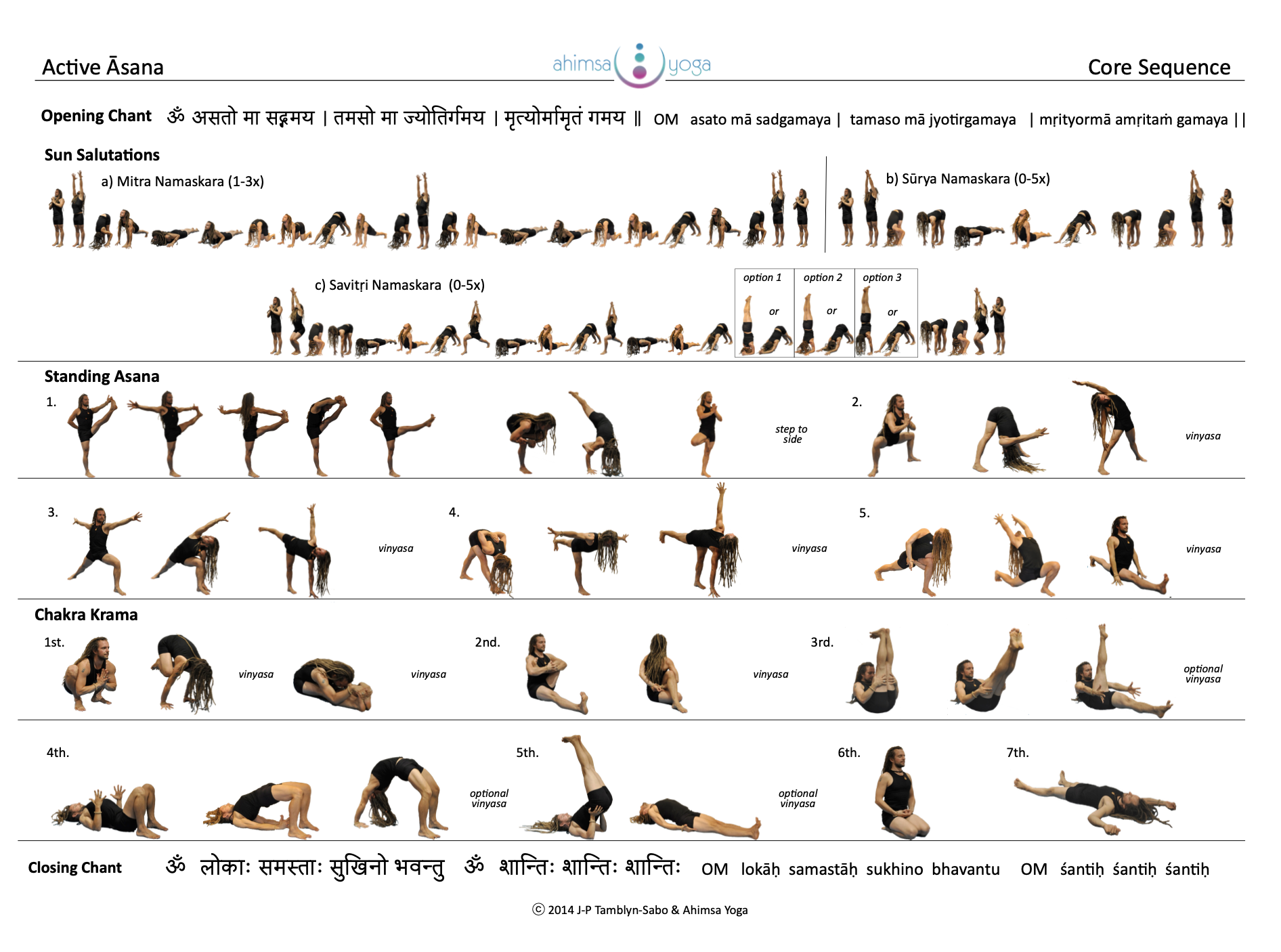
Practice Guides
The tools you need to develop an at-home self-practice.
**Recommended for experienced practitioners only - these guides provide no instruction.
How to use these guides…
Without a template to follow, even experienced yogis can end up drifting aimlessly in their practice, getting distracted, or falling into repetitive habits of returning to their favourite (or LEAST favourite!) poses, again and again.
These practice guides outline a well-balanced active yoga practice, ensuring that your time on the mat covers different families of postures, different movements, accessing all the different parts of the body in their full range of motion.
Please omit any postures that do not feel safe or appropriate for your current physical condition. Students should consult with a qualified yoga teacher and/or medical professional before undertaking any new physical activity or exercise.
Active Asana Guides
The Ahimsa Yoga Practice Outline
Opening Chant: “Asato Ma…”
The Asato Ma is a chant to remind us to use our practice to align with “Satya” - greater truth.
Section #1: Sun Salutations
Sun Salutations warm up the body, connect body to breath, get energy flowing and move gradually through the process of observing the body’s present condition to see what may be needed or not needed on the given day. In the Ahimsa Yoga system, sun salutations can be quite vigorous (including all 3 forms of sun salutations — Mitra, Surya and Savitri Namaskara — including arm balances and inversions), or quite mild (just the first sun salutation (Mitra Namaskara) involving minimal weight bearing on the wrists and minimal flexibility but still full-body and comprehensive). We always begin with mild sun salutations and explore and increase intensity from there as appropriate to ensure the practice is in alignment with the truth of the day.
Section #2: Standing Poses
Standing poses build strength, endurance and flexibility through active, upright invigorating yoga postures. There are 5 families of standing poses in the Ahimsa Yoga practice - Balance, Symmetrical base, Open-hip, Squared-hip, and “Hanuman’s sequence”. Each family uses different positions to target different muscle groups and together create a comprehensive practice of mid and lower-body focused poses. The sequences and postures provided in this guide are merely a suggestions, meant to eventually be customized to the individual yoga practitioner and the needs, challenges and aspirations of their unique practice. We encourage all yogis to modify or intensify these postures as they see fit.
FInal Section: “Chakra Krama”
Chakra Krama is a sequence of primarily seated and ground-based postures that progressively moves through the different parts of the physical and energetic body, using the 7 Chakras as a guide. This includes grounding (1st chakra), hip opening (2nd chakra), abdominal focus (3rd chakra), heart opening (4th chakra), focus on the area of the neck and throat (5th chakra), mental focus (6th chakra) and surrender / absorption / integration in final relaxation (7th chakra). As with the standing sequence, the postures within each section are variable and customizable to the yogi’s individual practice. With the intention of balance, including each of these 7 areas of focus is crucial to the success and purpose of this guide.
Closing Chant: “Lokah Samastah…”
The closing chant “OM, Lokah Samastah Sukhino Bhavantu, Om Shanti” is intended to bring the practice to a mindful close and remind the practitioner to bring the qualities and energy created from their practice to serve a higher purpose - to encourage greater togetherness and happiness in all beings, and to help all move towards greater peace.




